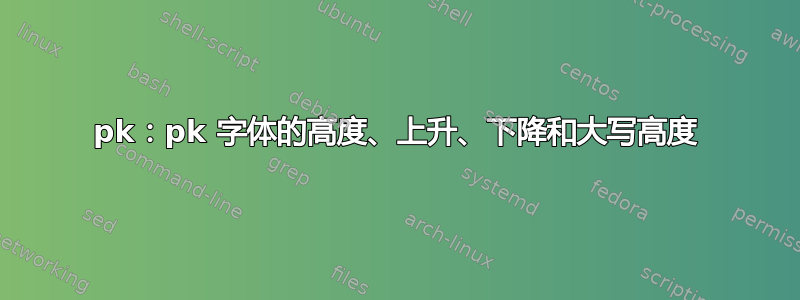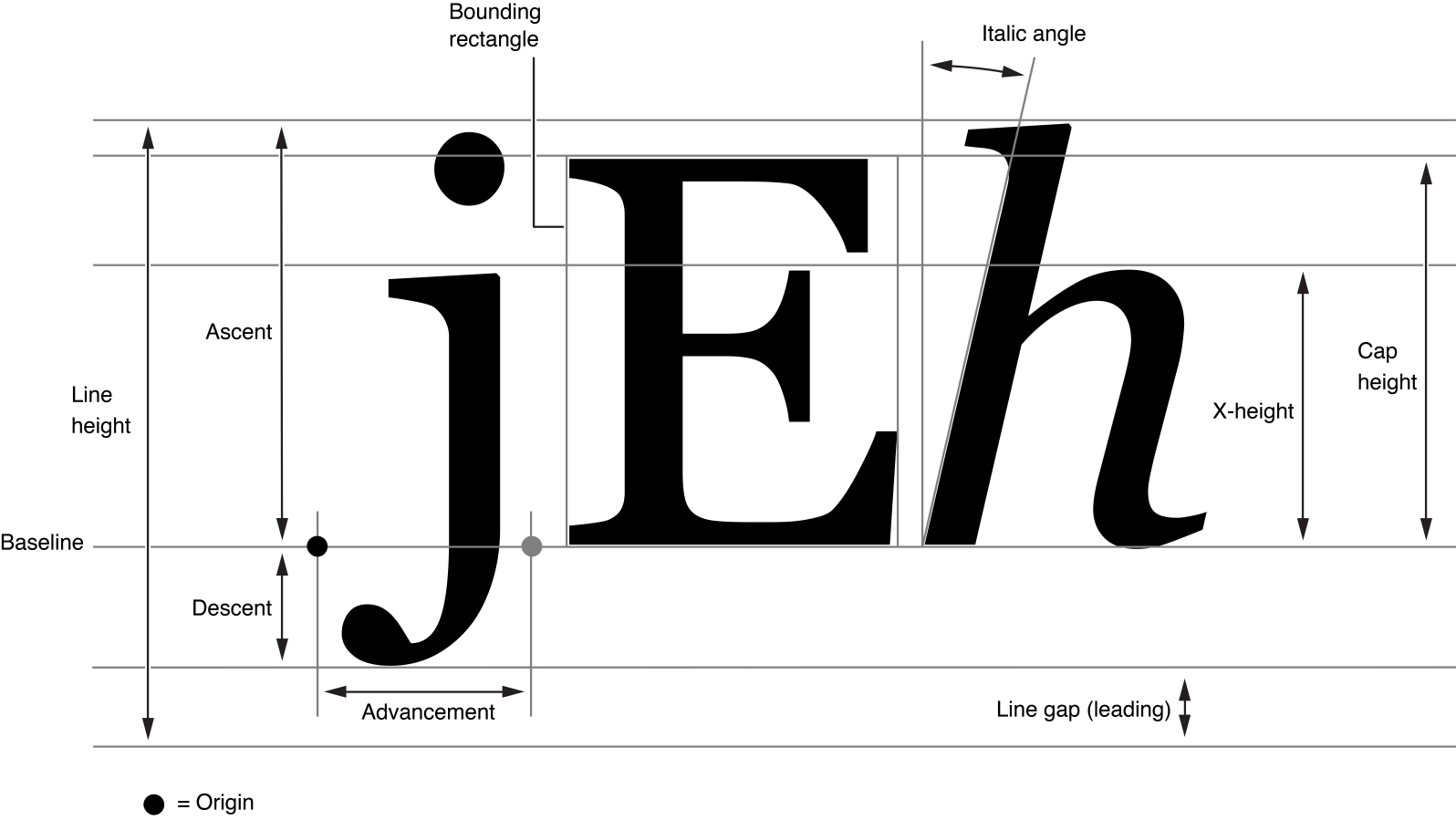
仍在用dvi-to-pngGo 语言编写程序([1]),我试图将人脸指标从Go 字体库的这个结构中强行塞入pk其中:tfm
package font // import "golang.org/x/image/font"
// Metrics holds the metrics for a Face. A visual depiction is at
// https://developer.apple.com/library/mac/documentation/TextFonts/Conceptual/CocoaTextArchitecture/Art/glyph_metrics_2x.png
type Metrics struct {
// Height is the recommended amount of vertical space between two lines of
// text.
Height fixed.Int26_6
// Ascent is the distance from the top of a line to its baseline.
Ascent fixed.Int26_6
// Descent is the distance from the bottom of a line to its baseline. The
// value is typically positive, even though a descender goes below the
// baseline.
Descent fixed.Int26_6
// XHeight is the distance from the top of non-ascending lowercase letters
// to the baseline.
XHeight fixed.Int26_6
// CapHeight is the distance from the top of uppercase letters to the
// baseline.
CapHeight fixed.Int26_6
// CaretSlope is the slope of a caret as a vector with the Y axis pointing up.
// The slope {0, 1} is the vertical caret.
CaretSlope image.Point
}

我可以从TFM数据中提取:
XHeight(IE:param[5],x_height)CaretSlope(IE:param[1],slant)
我假设其他数量没有直接等价物,对吗?至少不是直接从tfmnorpk数据中得出的。我猜可以通过遍历所有 ASCII 字母并应用一些启发式方法来推断它们:
A...Z:最大height假设对应于CapHeighta...z:最大height假设对应于Ascenta...z:最大depth假设对应于Descent
假设上述启发式方法成立,我仍然会缺失Height(或上图中的“行高”)。
有任何想法吗?
编辑:好吧,看来Ascent和的启发式方法Descent会导致错误的结果(比预期更小的值)。的启发式方法CapHeight给出了一个合理的结果。(较小,但大致还可以)


